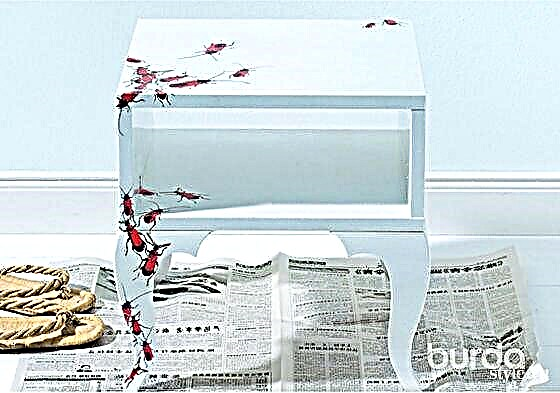In summer tunics and straight-cut dresses sewn from thin fabrics, cuts are often provided in the side seams. This adds to the models playfulness, light sexuality and, of course, wearing comfort.

But how is it best to process the seams and make side cuts so as not to burden weightless chiffon, thin muslin or delicate cambric with complex processing? One of the most suitable methods in this case is French seams and processing of open sections of sections with a role seam on an overlock or a narrow zigzag stitch on a sewing machine.
In this master class, I will show how to combine these two treatments using an example of a tunic based on the dress model from Burda 4/2016:
- Best-seller
- Special offer

- 1
- 2
- 3
- 4
Straight neckline processing
Step 1. Complete the French (side) seams
Fold the parts of the shelf and back with the wrong sides to each other, precisely aligning along the side seams.

Chip or sweep parts before cutting.
Step 2


Grind parts at a distance of approx. 7 mm from the edge.

Finish the line by smoothly leading it to the edge of the slices.
Step 3


Cut the allowance to 4-5 mm.
Iron the seam, and then iron one side.
How to make a french seam
Step 4


Turn out the details and sweep the side seams from the wrong side.
Step 5

Grind parts at a distance of approx. 5 mm from the edge.

Finish the stitch also by smoothly leading it to the edge of the slices in the same place where the outer seam was finished, which is now hidden inside.
Step 6


Iron the side seams on the back.
Step 7


Align the details of the shelf and backrest on the bottom.



Cut corners by rounding them. This will allow you to process with a role seam or zigzag stitch as easily as possible.
Processing by a role seam of direct and oblique sections of a product
Step 8. Process the cuts with a role seam

Begin seam treatment from one of the back side seams from the bottom.


Having reached the place where the cut began, lay it in a straight line and continue processing with the role seam. Thus, without interrupting the line, the processing of cuts and the bottom of the product.
Step 9


Iron the treated side cuts.

Done!
The author of the master class and photo: Julia Dekanova



